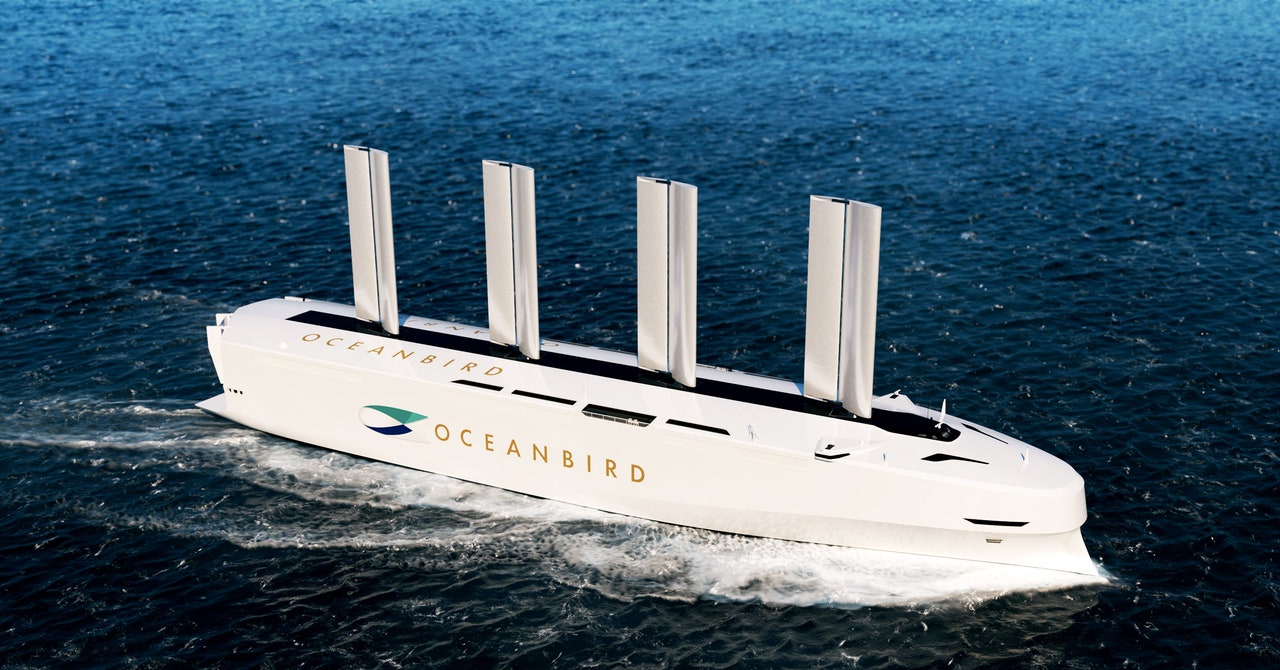There are restrictions, such as bottlenecks such as the Suez and Panama Canals: “Neither allows ships to operate under sail. There is also a bridge over the Panama Canal, with a height restriction of about 50 meters,” says De Beukelaer. And of course, not all ships adapt well to sailing. Container ships, for example, have little space on deck to set them up, unlike car carriers or bulk carriers, which stow their cargo in the cargo hold, leaving a lot of space, and do not need cranes to unload.
According to the IMO, there are seven categories of wind propulsion technologies, which can be applied to almost any type of ship. Although Oceanbird uses hard sails, there are also soft sails, which are most similar to classic sailboats, but with more advanced materials.
For large vessels, rotorsails (also called Flettner rotors, after their inventor) will be a popular option. These are compound cylinders that rotate up to 300 times per second and generate thrust through a pressure difference. The similar-looking suction wings or turbosails, developed by explorer Jacques Cousteau in the 1980s, do not rotate, relying on internal fans to create a suction effect. There are also giant kites, usually set up about 200 meters above the ship, and wind turbines, which are not much different from those used to generate electricity, but are mounted on deck with the ability to generate power or thrust. to deliver. Finally there’s a hull shape, where the whole ship is essentially designed like a big sail to catch the wind.
There are already about 25 large wind-powered freighters in operation worldwide, with most of these technologies represented: “The rotorsails have the most installations, one of the reasons is that they entered the market earlier than the others”, said Gavin Allwright, secretary general of the International Windship Association, a non-profit organization founded in 2014 that promotes wind propulsion in commercial shipping. “Back then, the entire shipping policy framework revolved around fossil fuels. Getting wind accepted and included is an ongoing challenge, but we’re seeing that happening more and more: by the end of this year, we should have 48, possibly 49 wind-powered ships, potentially bringing us to 3.5 million deadweight . of shipment.”
That’s a minuscule percentage of the world’s global capacity of 2.2 billion deadweight metric tons, as wind technology is still expensive at this nascent stage. “We are still in its infancy, but for every doubling of installations we see a 10 percent cost reduction,” says Allwright. “In 2023, however, it will probably be more than 20 or 25 percent [savings]because those early cost reductions are the easy, low-hanging fruit.”
Among other factors that could accelerate adoption, Allwright says, are streamlining the certification process for new wind-powered ships, as well as potentially higher fuel costs, which could be impacted by new carbon taxes, such as those the European Union has agreed to introduce. 2024. Another important factor is the adoption of slower shipping times. According to IMO estimates, simply adding wind propulsion to a single ship could reduce emissions by more than 22 percent. However, if you increase the journey time by a fifth, it becomes almost 50 percent, and if you increase the journey time by half, emissions are reduced by 67 percent. A study from the University of Manchester also shows that the reduction in emissions jumps from 10 percent to 44 percent on a rotorsail ship when speed is reduced and a flexible arrival time is allowed.

